A Year of Celebrating our Founder Calouste Sarkis Gulbenkian
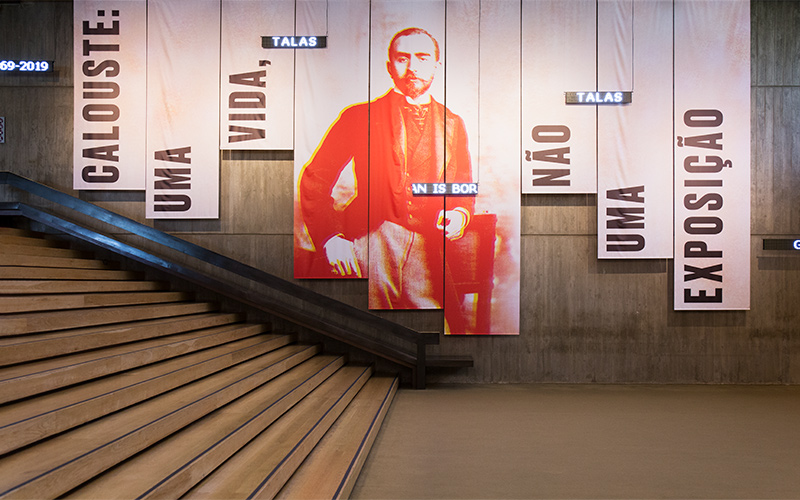
2019 was a year of 150th anniversary celebrations in the Armenian world: the birth of Gomidas Vartabed (Komitas), Hovhannes Toumanian, Levon Shant, Yervant Odian and Calouste Gulbenkian. Throughout the year, the Calouste Gulbenkian Foundation hosted many events to celebrate its Founder’s life. The commemorations focussed on Portugal, given that the largest legacy Gulbenkian left behind is his Foundation, established in 1956 through his will, and headquartered in Lisbon. At the time of his death, in 1955, Gulbenkian was the wealthiest man in the world.
The commemorations started in early January 2019, with the release (simultaneously in English and Portuguese) of the first truly academic biography of our Founder, Mr. Five Per Cent: The Many Lives of Calouste Gulbenkian, the World’s Richest Man, authored by Professor Jonathan Conlin. Based on vast archival sources in multiple languages and countries, including Armenian, the book paints the portrait of an exceptional (and at times quite a difficult) man. Weaving in his business interests, art collecting, family life and philanthropic work, the biography led to some rethinking about Gulbenkian and his legacy, doing away with some myths, and generating much debate within Portugal and elsewhere. The President of Portugal personally attended the launch of the biography in Lisbon, and spoke about it prior to a roundtable discussion with the author. The book was subsequently published in Armenia in October by a local publisher in Armenian and Russian translations.
Calouste Sarkis Gulbenkian was born on 23 March 1869, in Uskudar, a suburb of Istanbul. On the actual date of his birth, we celebrated his birthday through various activities. Twelve prizes were granted to the winners of the “Who is Calouste?” nationwide competition at a special award ceremony. The competition was open only to youth (15-25 years old) residing in Portugal. Through their artistic submissions – in music, text, film and visual arts – young people told the story of Mr. Gulbenkian and what he means to them. Their works were displayed at the Foundation in a dedicated exhibition. There were 457 entries from individuals and school-based student groups.
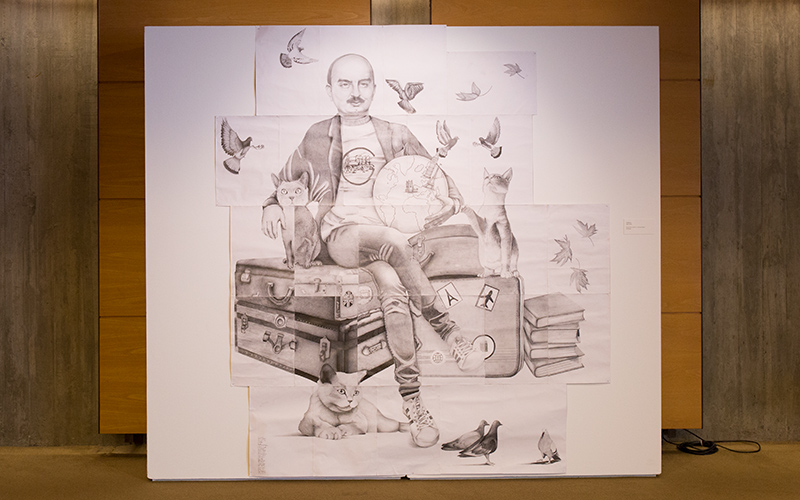
Our 1000-seat Grand Auditorium was abuzz with young people during the ceremony, celebrating the life of Calouste Gulbenkian (while prior to it, our meeting rooms were full with discussions about global citizenship, taking Gulbenkian as an example). The band Collectif Medz Bazar ended the prize ceremony, bringing the audience to its feet. I saw something I had never seen before in the formal setting of the Gulbenkian Foundation’s Grand Auditorium: an Armenian shourchbar in the aisles! Hundreds of young people from around Portugal had brought a special excitement to the Foundation. This was only one component of the celebrations on March 23rd.
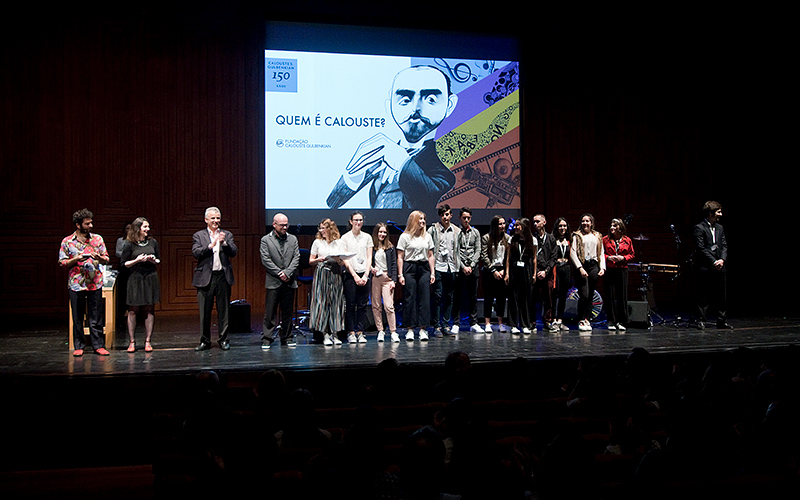
At a more formal event on the same day, the memory and legacy of Calouste Gulbenkian was honoured in the presence of invited dignitaries, the Foundation’s Board of Trustees and over a thousand guests. Archbishop Khajag Barsamian, Ejmiatsin’s Pontifical Legate to Western Europe and the Vatican graced us with his presence throughout the day. The Founder’s great-grandson, Martin Essayan, gave a keynote speech highlighting Gulbenkian’s values, the President of the Foundation, Dr. Isabel Mota spoke about the Foundation, and the Gulbenkian Orchestra played Beethoven. In a unique ceremony, a commemorative stamp dedicated to Mr. Gulbenkian, was jointly issued by Portugal Post and Armenia Post just prior to the main ceremony.
During the evening, a nine month-long exhibition was inaugurated on the life of Gulbenkian, entitled, “Calouste: A Life, Not an Exhibition.” Mounted by the well-known Portuguese curator, Paulo Pires do Vale, the exhibition interrogates conceptually the practice of displaying a real life through the act of exhibiting. Over 32,000 visitors have already experienced the exhibit, which evolves around key events in the life of Calouste Gulbenkian. It is important to note that, as far as we know, this is the first time an exhibition at the Foundation has been mounted in three languages, including Armenian, in addition to Portuguese and English.
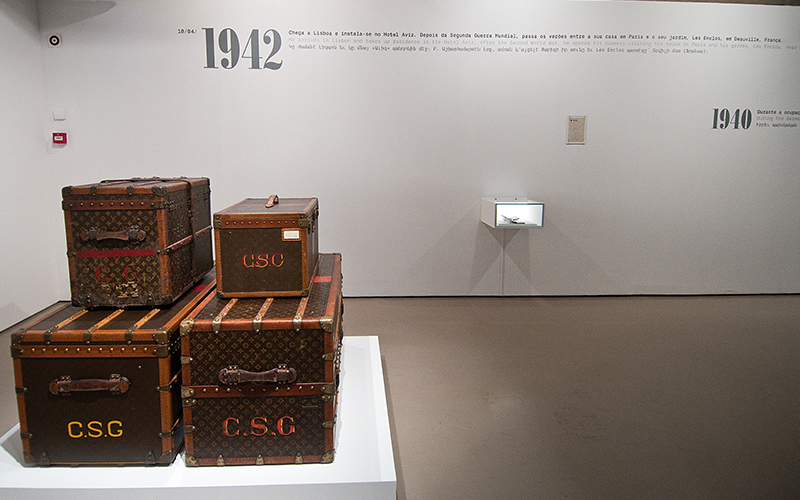
Under the umbrella of the 150th anniversary, another exhibition (and related conferences and seminars) was organised by the Gulbenkian Museum, drawing on the Founder’s vast art collection. “The Rise of Islamic Art” (1869-1939) stood out for its beauty and original angle of interpretation. Curated by the Museum’s own Jessica Hallett, the exhibition focussed on Europe’s – and Gulbenkian’s – fascination with Orientalism. It analysed his network of art and antiquities dealers through whom he bought items for his collection (about a quarter of whom were Armenian), and asked the question what “Islamic Art” means? Part of the exhibition included Armenian and other Christian pieces which came from the Islamic world.
A series of concerts, organised by the Foundation’s Music Department, brought Armenian music – and some of our giants – onto our stages. Tigran Mansurian’s requiem moved us deeply as it was played in April by the Gulbenkian Orchestra and Choir. The Dellalian Trio and the Lisbon Chamber Ensemble played some of his other pieces. Mansurian himself – celebrating his 80th birthday this year – charmed us by explaining the intricacies of Armenian music in an interview in front of a live audience of music lovers. The Gurdjieff Ensemble, in collaboration with Hewar, and pianist Lusine Grigoryan, delighted us with their intricate music in September. The famous Portuguese pianist, Maria João Pires, staged two packed piano concerts with Armenian music and musicians in September and November: respectively, Talar Dekrmanjian (soprano) and Lilit Grigoryan (piano). Also in November, Tigran Hamasyan wooed us with his dazzling piano and jazz. Finally, the Trio Aeternus and the Dellalian Trio closed the 150th anniversary celebrations with two intimate concerts in December, right within the exhibition devoted to the life of Calouste Gulbenkian.
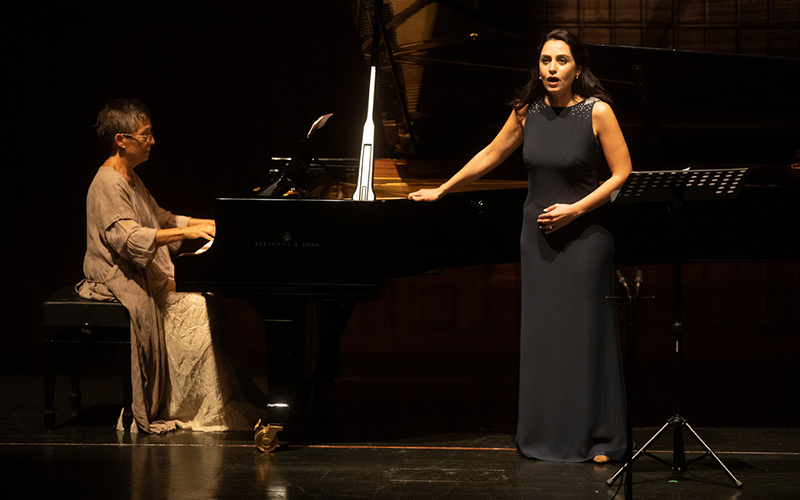
Outside of the premises of the Foundation, we sponsored an additional concert devoted to Armenian music, in the beautiful setting of the Sintra Palace, by Portugal-Armenia Friendship Society’s Consonância Orchestra. The concert featured the work of Grigor Arakelian, another great Armenian maestro, who conducted and played the “Armenian viola.”
The music of Gomidas was featured in practically all the concerts; his music was intertwined with the life of Calouste Gulbenkian. Two Armenian men, born in the Ottoman Empire during the same year, could not have had more different lives. One died in a psychiatric hospital in France, unable to bear the trauma of the Genocide, while the other died the richest man in the world because of his oil interests in what was the Ottoman Empire (and subsequently Iraq).
Calouste Gulbenkian engaged in philanthropy throughout his life, both for Armenian and non-Armenian causes. In fact, even before Gulbenkian was born, his clan, one of the amira families in Constantinople (with roots in Talas), was known for community support. Calouste Gulbenkian continued the tradition of philanthropy (e.g. support to Armenian refugees in the 1920s, the construction of the St. Sarkis Church in London), and modernised it, moving away from charitable giving to a more results-oriented approach toward the end of his life. He left practically his entire fortune to a foundation bearing his name, with the aim of the betterment of humanity through the arts, education, science and charity.
The 150th anniversary of his birth was an opportunity for us to rethink the role of foundations and charitable donations in the 21st Century. We organised an international conference in September entitled “Emerging Trends in Philanthropy.” The largest European foundations (and some American ones) were invited to discuss current challenges and opportunities facing foundations. The theme of impact (and how to measure it) came up over and over again, along with the need to adapt and rethink programmes and initiatives in light of new global developments, the crucial importance of long term planning, and being agents of positive change.

Every July 20th, the day of Gulbenkian’s death, the Foundation marks “Founder Day” through a solemn wreath-laying ceremony and a Church Service. This year (held on July 19), the Service was ecumenical (Catholic and Apostolic), with the participation of Khajag Srpazan on his second visit to the Foundation from Rome. Founder’s Day also includes the awarding of the annual Gulbenkian Prizes, including the Calouste Gulbenkian Prize for Human Rights. In 2019, it went to the Lebanese writer and educator Amin Maalouf.
On Founder’s Day we launched the second book of the year, this time, Calouste Gulbenkian’s own writings in the form of letters to his only grandchild, Mikael Essayan (whom he seemed to be grooming as his successor): A Educação do Delfim: Calouste Gulbenkian’s Letters to his Grandson. While teenage Mikael was studying at Harrow boarding school near London during the early 1940s, his grandfather, in Lisbon, took direct control of his education (Mikael’s parents were stuck in Nazi occupied France). What emerged is a remarkable correspondence between a grandfather and his grandson – a grandfather who deeply cares, but wants to control every aspect of his grandson’s life.
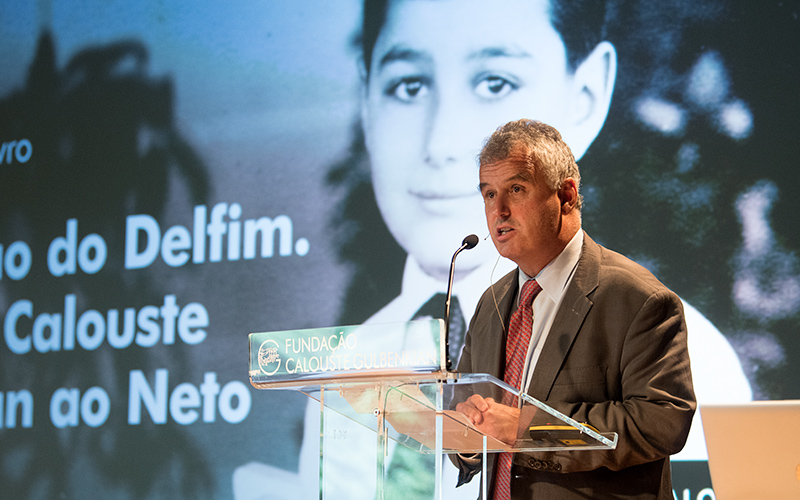
The letters, stored at the Foundation’s archives, contain much advice and are reflective of Gulbenkian’s thinking. They are the closest we can come to understanding the inner thoughts and beliefs of Mr. 5% as he speaks of his values and takes decisions over both important and mundane matters in the life of his “Dauphin.” The book contains one particularly interesting letter for Armenians in which Gulbenkian strongly chastises his grandson for even considering to convert out of the Armenian Apostolic Church and into the Anglican Church. There are many “quotable quotes” in the letters. Here are two examples:
“Nothing displeases me more than snobbishness or swollen-headedness…. From my long personal experience I find that people with such weaknesses do not go very far in life and do not generally succeed in occupying foremost places in the community.”
And,
“You should never run after money when, with constructive and persevering efforts and work, you will find later on instead of running after money, money will be running after you.”
The launch of the book was in itself unusual and even fun, insofar as it was a roundtable between some of the young winners of the “Who is Calouste?” competition in March and Mr. Martin Essayan, Mikael’s son, and Calouste Gulbenkian’s great-grandson, who is a member of the Board of Trustees of the Foundation (and responsible for the Armenian Communities Department). During the book event, various members of the Foundation staff read moving passages from the letters.
Many other events took place throughout 2019 in the context of the 150th anniversary celebrations or related to it. First among them was the visit of President Armen Sarkissian to the Foundation in April. He was received by the President of the Foundation and various Board members. The newly appointed Ambassador to Portugal, Mr. Garen Nazarian visited us in December, accompanied by his wife Nana, and attended one of the closing concerts of the celebrations. Throughout the year, various other prominent guests and community leaders paid a visit to the Foundation and its Armenian Communities Department.
New structures were installed in the Gulbenkian gardens as “reflection points” about nature quoting Gulbenkian (Calouste Gulbenkian was a great admirer of nature, a bit of an irony now given that his main business was oil). Workshops for children called “A Man with a Thousand Homes” were held within the Museum about the life of Gulbenkian. Cinemateca Portuguesa organised, with our support, a retrospective of Artavazd Pelechian, the great Armenian filmmaker, and hosted him personally in Lisbon.
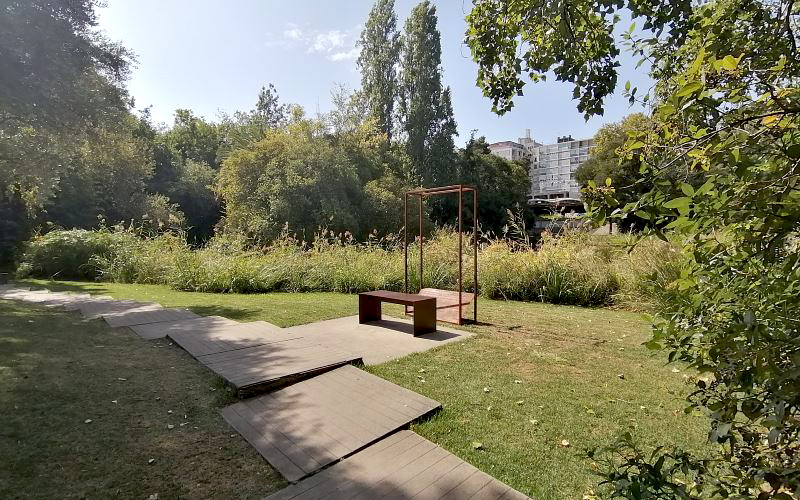
We organised book events for the Gulbenkian biography in London (in February) and Paris (in March), and sponsored Jonathan Conlin’s book tour to the US. A modest grant to the archival scholar Emma Hovsepyan enabled her and the National Archive of Armenia to publish the book Dohmig Parerare (The Noble Benefactor) in Armenian, containing some of the letters about Armenian issues in Gulbenkian’s archives held by the Foundation. Finally, a large group of Portuguese colleagues from the Foundation visited Armenia on holidays for the first time this year and returned with very fond memories.
Throughout the year, there was considerable coverage in the Portuguese press about Calouste Gulbenkian and Armenians, the most recent one being a lengthy article in the major national newspaper Expresso (on 7 December) about the younger Gulbenkian.
Our year of celebrations in Portugal formally ends on 31 December 2019, with the close of “Calouste: A Life, Not an Exhibition.” We strived to show the genius of Calouste Sarkis Gulbenkian, his impact on the world and his achievements, his Armenian culture and his complex character. We focussed less on his material wealth and more on his values and on his legacy. Half a century before Bill Gates, Gulbenkian wanted his wealth to be harnessed to realise an international vision of peace and prosperity – simply put, he wanted to make the world a better place. Being ahead of his times seemed to be a motto for Mr. Gulbenkian.
In March 2020, before his birthday, we will be sponsoring some events in Yerevan – concert and conference – to cap off the celebrations.
I was humbled by the fact that the President of the Foundation, Dr. Isabel Mota, along with Mr. Martin Essayan, entrusted me to assume the responsibility for the overall coordination of the 150th anniversary celebrations of our Founder, along with a small team of dedicated colleagues. Organising and coordinating all the events took a considerable portion of my time. However, the Armenian Communities Department continued to deliver its programmes in the Diaspora and in Armenia, with educational support, publications, Zarmanazan, Western Armenian revitalisation programmes, the Armenian Diaspora Survey, university scholarships, grants to institutions, academic funding for Armenian Studies, and many many other initiatives. We will speak much more about these in the New Year, presenting to the Armenian world the achievements of our previous five-year plan and our plans for the next five years. 2020 will be our year of communications!
